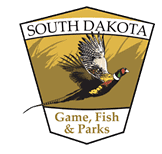Habitat Conditions Key to South Dakota Pheasant Hunt
OutdoorHub 10.18.12

Many hunters will flock to South Dakota fields on Saturday for the traditional opening of the annual pheasant hunting season with optimism.
Reasons for this optimism are first, the mid-summer pheasant count estimated the statewide pheasant population to be up 18 percent from last year and second, South Dakota offers a wealth of public hunting opportunities. There are more than 1.2 million acres of Walk-In Areas; 294,000 acres of state-owned Game Production Areas; and 150,000 acres of federal Waterfowl Production Areas available to hunters in the state.
In addition, the Game, Fish and Parks Department has expanded its cooperative efforts with private landowners and the US Department of Agriculture to provide wildlife habitat and public hunting opportunities on nearly 70,000 acres in the James River valley that are enrolled in the Conservation Reserve Enhancement Program.
“The number of birds in different areas of the state is closely linked to the quantity and quality of habitat found in a local area” said Tom Kirschenmann, GFP chief of wildlife and habitat programs.
“The effects of this year’s drought has impacted both cropland and grassland habitat” he said. “In much of the state, grassy vegetation that pheasants rely upon is less abundant and less dense than last year.”
Drought also had a direct impact on farmers and ranchers who rely on the land to make a living. To help mitigate a shortage of livestock forage, producers were allowed to cut hay and graze livestock on many acres in the Conservation Reserve Program.
“Many of the Walk-in Areas that GFP leases from private landowners for public hunting access are part of working farms and ranches,” Kirschenmann said. “Some of the CRP acres that are part of Walk-in Areas were cut for hay or grazed. While haying and grazing allowances provided vital assistance to stressed agricultural producers, it will mean less available cover for hunting on some areas.”
On the flip side, there is a benefit from the dry conditions that persist across most of the state: With crop harvesting nearing 90 percent complete, there are fewer places for wily roosters to hide.
“When habitat is diminished, pheasants congregate in places with cover where they feel secure,” Kirschenmann said. “Unharvested crops and the remaining idle areas of standing cover are likely to provide some very good hunting opportunities.”
Hunters will find information on public hunting opportunities in South Dakota on the GFP website at http://www.gfp.sd.gov/hunting/areas/default.aspx

